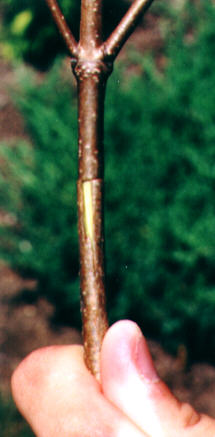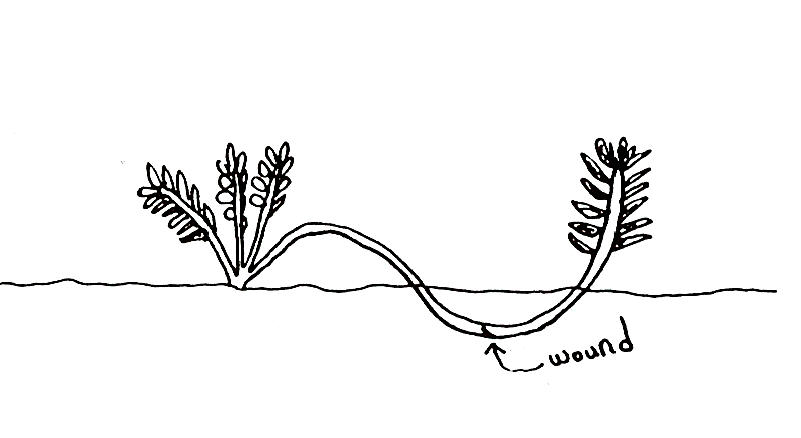People ask me all the time if they can grow a fruit tree from a seed. Yes the seed will produce a lovely tree, but chances are you are not going to get what you were expecting out of it.
When you grow something by seed you are going to get the most generic version of that plant. For example, if you grow an apple from seed, you are going to get an apple tree, but the most generic apple there is. You won’t be able to grow a Honey Crisp apple from a Honey Crisp apple seed.
To get the variety of fruit desired, most farmers use a process called “T budding” where you take a bud from the desired fruit tree and insert it into a seedling tree that has been grown from good root stock.
Successful T budding requires that the scion material have fully-formed, mature, dormant buds, and that the rootstock be in a condition of active growth such that the “bark is slipping“. This means that the vascular cambium is actively growing, and the bark can be peeled easily from the stock piece with little damage.

you can see where this “T” shaped cut was made
The other way to propagate the fruit tree of your choice is by a process call “air layering”.

Making a small wound on the portion of the stem that is to be buried will help to stimulate root development.
Air layering is a propagation method for plants and trees that allows you to root branches while still attached to the parent plant.
You would want to start your air layering at the beginning of the growing season. Roots begin growing when it is warm out, like 69-70 degrees. Here in Ohio that would be May or June and the roots will be formed by fall.
I made a video on this
mike will are you gonna offer pots again
Cliff, no we will not. Too many other sources out there. Check greenhouse mega store.
MIKE I WATCH A VIDEO GRAFTING
I HAD AN APPLE TREE THAT I CUT DOWN ONLY 16″‘ WAS STILL GOOD
I DONE 2 HONEY CRISP AND 2 SWEETSIXTEEN BUDS TO THAT TREE STOCK..
HOW LONG WILL IT TAKE BEFOR I KNOW IF THEY TOOK
THANKS SAM
Sam,
It’s difficult to say, but you should know for sure in 90 days or so. If they look good in 90 days they should be fine.
I have the same problem. I planted plum tree….bought in Lowes…. and is growing nice for 7 years now. Get many flowers and plums every year but when they get about quarter size all of them drop off. I did try to spray 2 years in spring and put some fertilizer, but didn’t help. Maybe wasn’t enough. So far I got 3 plums and they were very juicy and sweet. I wish I know how to prevent them from dropping so I can enjoy to eat them . They are very tasty.
Dear sophie you need to buy another plum tree of a diferent variety for cross polenisation it happen with a lot of fruits trees.
About 8 or 9 years ago I got a root planting from my older plum tree and replanted it. It has grown quite tall and every year bears seeds but all the plums drop off before they can grow and ripen. I have never fertilized the tree. Should i spray it for bugs or is it just a generic tree not meant to grow fruit? I don’t know what to do with it. I am in NH and this variety was developed for cold weather. My older tree used to grow bushels of plums.
Kate,
If the tree that you now have grew on it’s own from seed, then it is very much generic and not the same variety that originally had. Most fruit trees benefit from spraying, but not always. Organic growers never spray their trees. If you know the variety of your original tree I’d try and find another one of those.
It was a root cutting like you descrbe above that i took from the original tree and replanted.
I want to stay organic with it but the japanese beetles nearly destroyed it last year.